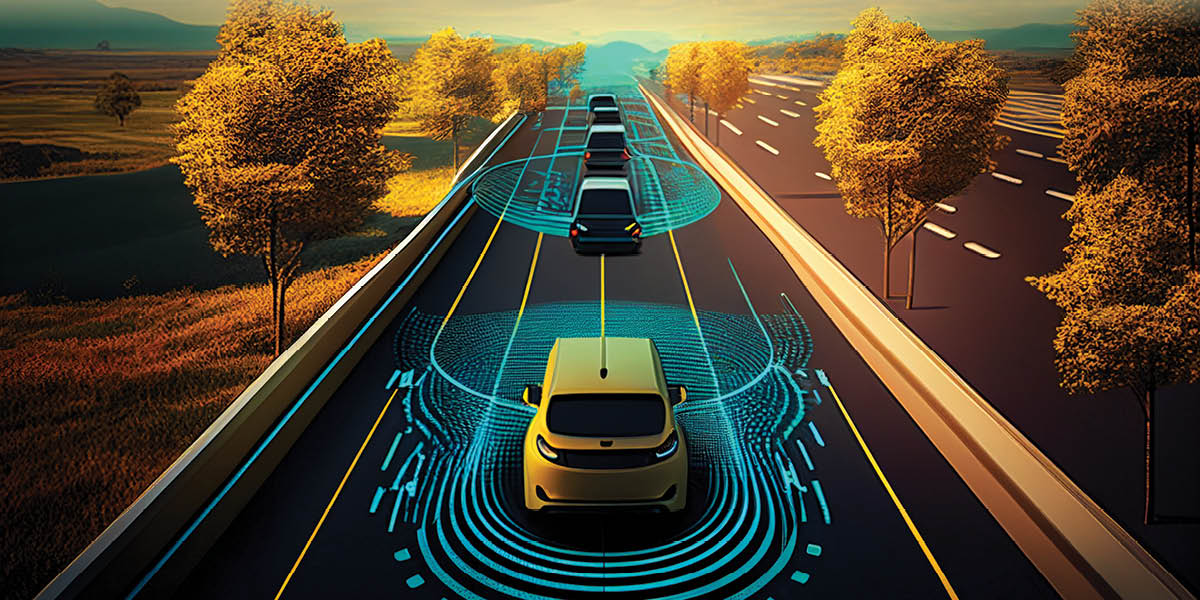HD map are the bedrock upon which the future of connected and autonomous vehicles is built. They empower vehicles to perceive and comprehend the world with unparalleled accuracy.
At the center of today and tomorrow’s smart mobility solutions are digital, high-definition (HD) maps.
Just as a precise blueprint is fundamental to constructing a skyscraper, HD maps are crucial to understanding ground truth – from guiding automated vehicles, to constructing digital twins for urban planning, and optimizing transportation and logistics.
As per research estimates, the global HD map market for the automated vehicle market is expected to generate INR 308 billion by 2025. It is further projected to reach INR 5.5 trillion by 2035, growing at a CAGR of 33.4% from 2025 to 2035. HD maps are highly accurate, dynamic representations of the real world, augmented with a wealth of information. They provide a digital replica of the environment, capturing details down to centimetre precision.
As driving gets more automated, HD Maps will provide the added intelligence to automated vehicles to help them address lateral and longitudinal control, apply contextual awareness to the surrounding environment, and process local road rules to enable safer and more proactive driving decisions. With automated vehicles and advanced driver assistance systems (ADAS) getting more prevalent, the value of HD maps cannot be overstated.
Enhancing Safety through Precision
For automated vehicles to operate safely and efficiently, they require a high-fidelity map that can be updated with input from numerous sources as quickly as possible.
Having an HD map that supports ADAS and highly automated driving (HAD) systems means that vehicles are equipped ahead of time with precise information about the road network to help them navigate safely through complex scenarios.
In other words, an HD map and its continuously updated data layers provide automated vehicles with an extended view, beyond the on-board sensors, to “see” and “understand” the world around them. For example, when an automated vehicle approaches a busy intersection, an HD map provides not only the layout of the roads and traffic signals, but also critical information about the surrounding and the rules specific to that intersection. This empowers the vehicle to plan its movements, predict the actions of other vehicles, and ensure a smooth passage.
Today, HD maps play a central role for the most advanced automated vehicle systems in the market. The BMW 7-Series’ SAE (Society of Automotive Engineers) Level 2 “hands-free” automated system – currently available in the U.S. and Canada, and from the end of 2023 in Germany in the new BMW 5-Series – drives ‘on-map’ instead of ‘on-lane’.
This means it depends upon a high-quality HD map for attributes such as geometry, lane positioning and predicting road traffic signs in time. The sensors act as an extra layer so that the safety load is shared between the sensors and the map. The HD map is the primary input for creating the driving path of the vehicle with the sensors as a backup.
The future of smart mobility is about creating an interconnected ecosystem where vehicles can communicate with each other and their environment.
Fostering a Seamless Collaborative Ecosystem
The future of smart mobility extends beyond individual vehicles; it’s about creating an interconnected ecosystem where vehicles can communicate with each other and their environment via a common language that brings together various stakeholders, including automotive manufacturers, software developers, infrastructure planners, and city authorities. This common language is underpinned by an HD map.
It provides a standardized and detailed representation of the environment. This data sharing will in turn create a collaborative environment where vehicles can work together to ensure a smoother flow of traffic and enhance overall road safety. In the case of India where the country grapples with significant traffic congestion in its urban centers, an HD map can offer the foundation for real-time traffic updates, allowing commuters to plan their routes better and avoid congested areas.
HD maps provide data on the road conditions that can impact vehicle wear and tear, allowing EV owners to take advantage of predictive maintenance.
Empowering Location-based Services
Urban planning and development can also rely on an HD map for detailed geographic and infrastructure information. Understanding traffic flow, population density, and infrastructure needs will assist in creating sustainable, smarter and more efficient urban environments.
HD maps can also be integrated into various mobility services, such as ride-sharing and delivery platforms to optimize their operations. By utilizing precise location data and traffic insights, these services can enhance efficiency, reduce travel times, and ultimately deliver a superior customer experience. Investors will also recognize the immense potential and impact of these services on various industries, prompting financial support and fueling further innovation.
According to research, the global smart mobility market is set to reach INR 33.6 trillion by 2032 and growing at a compound annual growth rate of 23.6% between 2022 and 2032. The availability of HD maps will act as a catalyst for innovation and investment, further contributing to this expanding industry.
Encouraging Electric Vehicle Adoption
According to McKinsey, 70 per cent of primary car owners in India have expressed their interest in considering an electric car for their next vehicle purchase – surpassing the global average of 52 per cent. Moreover, electric two- and three-wheelers are also attractive options in the service industry for ride-hailing and food deliveries to bring down carbon emissions and improve air quality in the country.
As the transition to EVs unfold in India, data continues to play a huge role. Indian consumers who are considering an electric car next are also concerned about technology-enabled safety, charging time, and the availability of charging points. HD maps provide data on the road conditions that can impact vehicle wear and tear, allowing EV owners to take advantage of predictive maintenance.
With that in mind, an HD map is a feature that could lead to higher EV adoption. EV manufacturers should consider integrating locations of charging points, power capacity and availability statuses with an HD map that has historical and real-time data – such as precise elevation and terrain information, weather conditions and traffic patterns – to help EV drivers better plan their route. This brings about an enhanced efficiency and overall EV driving experience that could boost the country’s appetite for EVs.
In India, the government has plans to make driver assistance features such as adaptive cruise control, brake assist and lane keep assist a mandatory feature in all passenger and commercial vehicles. These features are supported by HD maps, which further helps automakers comply with strict regulations and legal requirements. As we journey into the future, the role of HD maps will only become more significant.
Advancements in technology, such as 5G connectivity and artificial intelligence, will further elevate the capabilities of HD maps, enhancing real-time updates and predictive analysis. HD maps are not just lines on a digital canvas; they represent a paradigm shift, a revolution that will redefine the way we move in this new era of smart mobility.









